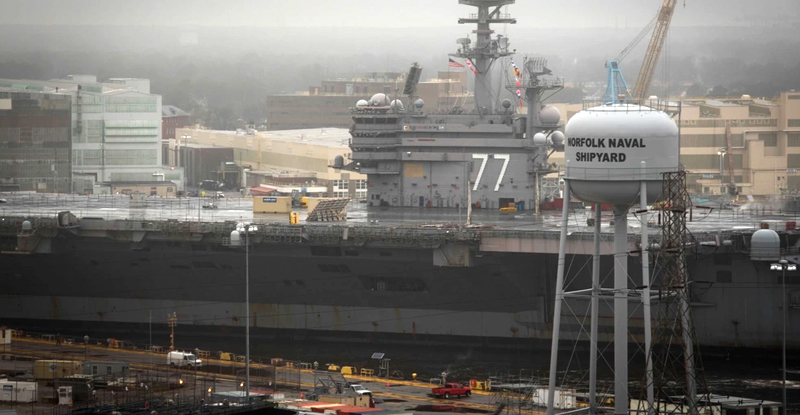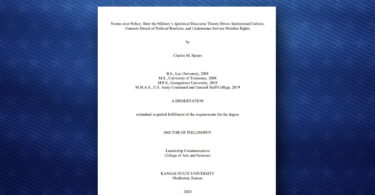By Capt. Brent Ramsey, USN ret
STARRS Board of Advisors
In 1890, Alfred Thayer Mahan, a renowned naval strategist, published his groundbreaking work, The Influence of Sea Power Upon History. This seminal book documented the preeminent role sea power has on world power and influence, showing that maritime powers have consistently dominated throughout modern history.
Mahan’s work was hailed around the world as proof of the importance of sea power to national power.
Teddy Roosevelt, the presidents during the two World Wars, and Ronald Reagan during the Cold War era recognized the wisdom of Mahan’s doctrine and built the U.S. Navy to preeminence and power. Maritime power enabled the United States to project power and influence worldwide, strongly supported our allies, and promoted American values.
Sea power was the cornerstone of our victory in two world wars and, most recently, in the Cold War against the Soviets.
The importance of maritime power is even greater in 2024 than it has ever been because the world’s economy is based on the transportation of goods by sea.
Yet, since the fall of the Soviet Union, the U.S. has ignored this foundational principle of national power and allowed our Navy and maritime infrastructure to atrophy and wither to a shadow of its former self.
During Reagan’s presidency, the Navy was a robust world-spanning sea power with almost 600 battle force ships, and we were unchallenged in naval power around the world.
Today, the Navy has 291 battle force ships and only 231 combatants. That number will decline in the coming years.
Fleet Forces Command recently said that the Navy could only keep about 55 ships at sea at any given time, far short of the threat requirements.
Many ships are in long-term maintenance, have just returned from long deployments requiring crew rest, are short of crew (over 14,000 sea billets are vacant), or are awaiting maintenance, re-arming, or upgrades before they can go back to sea.
The Navy is desperately short of ships and crews.
President Joe Biden presented his 2025 budget recently, calling for only six ships while retiring 19.
The Navy’s budget is going up by 1%, less than inflation, so in real terms the budget is down.
The CCP announced that its defense spending will increase by 7% next year. Defense as a percentage of GDP is ~2.9%, a record low.
Instead of the Navy building up in the face of existential threats multiplying around the world from China, Russia, Iran, North Korea, and radical Islam, our Armed Forces and the Navy are shrinking to unacceptably low levels.
Compounding the problem, the U.S. has allowed our shipbuilding capability to diminish to bare bones.
During the Cold War, we had dozens of shipyards turning out warships. Today, we are down to a handful, and they can’t keep up with their tiny workload.
Fincantieri (building the new Constellation class Frigate), General Dynamics, and Huntington-Ingalls (building the new Virginia class attack submarine) announced production delays of a year+ on each of their programs.
We desperately need more ships, but the industry lacks the capacity to deliver.
Despite a series of recent crises, such as the fallout from COVID and economic stagnation, China reacted not by reexamining its assumptions and modifying its approach but by doubling down on building up its armed forces.
These choices have increased the threat China poses to the security, prosperity, and shared values of the U.S. and our allies.
A leaked Navy intelligence report from 2023 indicated that China has over 200 times the shipbuilding capacity of the U.S.
According to the Pentagon, by 2025, the Chinese Navy will number over 400 ships. In addition, they have 120 armed Coast Guard ships under Navy command. Their ships operate in close proximity to the Chinese mainland.
According to the United States Naval Institute, which tracks where our Navy’s ships are, the U.S. Navy now has only 65 combatants forward deployed. Roughly 45 ships are in INDOPACOM — 45 versus 500.
Even with our qualitative edge, those figures ought to scare the daylights out of Americans who understand the importance of sea power.
The world is 70% ocean, and 90% of the world’s commerce goes by sea. Any conflict with the PRC over Taiwan or any other Pacific ally could disrupt the world’s economy, including ours.
To maintain our influence in the Indo-Pacific and offset the threat of Chinese domination, we need a strong forward presence by our Navy.
The potential for a war with China over influence in the Pacific to change everything is real.
If China becomes the Pacific hegemon, it will dominate our allies and dictate the rules of commerce worldwide.
This is a future we can prevent. It’s time for citizens to act.
Contact your senators and representatives and demand the urgent rebuilding of the United States Navy and the naval shipbuilding industry.
Your way of life depends on it.








Leave a Comment